
The Gharm Oblast [lower-alpha 1] was an oblast in the Tajik Soviet Socialist Republic in the Soviet Union from the 1920s to 1955. Its capital was Gharm. The population of Gharm were known as Gharmis, a term still used in Tajikistan today.

The Gharm Oblast [lower-alpha 1] was an oblast in the Tajik Soviet Socialist Republic in the Soviet Union from the 1920s to 1955. Its capital was Gharm. The population of Gharm were known as Gharmis, a term still used in Tajikistan today.
In the 1920s, during the reorganization of borders in Central Asia, a Gharm oblast was created out of the old Qarategin and Darvaz, districts of the Emirate of Bukhara. The Gharm Oblast consisted of much of the Qarategin Valley, as well as the Kalai-Khumb District. During the 1920s Gharm was a hotbed for the Basmachi, the anti-Soviet resistance in Central Asia. In 1929 Basmachi commander Faizal Maksum crossed from Afghanistan into Tajikistan and briefly captured the city Gharm, only to later be expelled by Soviet forces. [1] [2]
The 1939 Soviet Census record a population of 183,100 in the Gharm Oblast. [3] During the 1950s much of the population of Gharm was forcibly relocated by the government to western Tajikistan (Vakhsh valley). This population of people is known today as the Gharmis. In 1955 the Garm oblast was abolished and the land was redistributed to the Gorno-Badakshan Autonomous Oblast and the Regions under Republican Subordination Oblast. The Gharmis continued to have a distinct clan identity in Tajikistan. During the Civil War in Tajikistan from 1992-1997 many Gharmis were targeted for massacres.
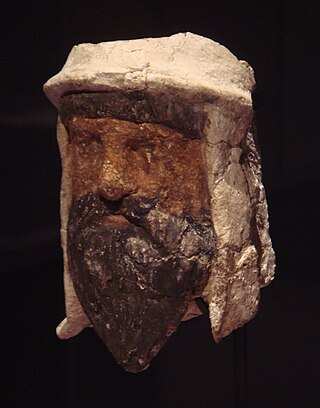
Tajikistan harkens to the Samanid Empire (819–999). The Tajik people came under Russian rule in the 1860s. The Basmachi revolt broke out in the wake of the Russian Revolution of 1917 and was quelled in the early 1920s during the Russian Civil War. In 1924, Tajikistan became an Autonomous Soviet Socialist Republic of the Soviet Union, the Tajik ASSR, within Uzbekistan. In 1929, Tajikistan was made one of the component republics of the Soviet Union – Tajik Soviet Socialist Republic – and it kept that status until gaining independence 1991 after the dissolution of the Soviet Union.
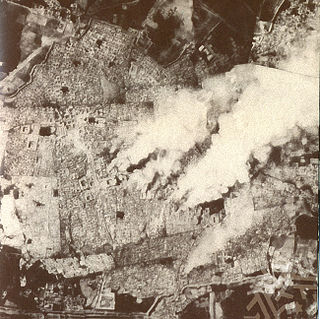
The Basmachi movement was an uprising against Imperial Russian and Soviet rule in Central Asia by rebel groups inspired by Islamic beliefs.
Gharm is a city and jamoat in the Rasht Valley area of central Tajikistan. The population of the town is 9,800.

The Rasht Valley is located in Tajikistan and composes a significant portion of the Region of Republican Subordination, including the five districts of Lakhsh, Rasht, Tavildara now Sangvor, Tajikobod and Nurabad. Historically the Rasht Valley has been called Karotegin or Karategin. During the 1992-1997 Tajikistan Civil War, the region was a stronghold for forces opposed to the government of Emomalii Rahmon and became the site of numerous battles. Notably, four members of the United Nations Mission of Observers in Tajikistan were murdered in the Garm district in 1998.

Khatlon Region, one of the four provinces of Tajikistan, is the most populous of the four first-level administrative regions in the country. It is situated in the southwest of the country, between the Hisor (Gissar) Range in the north and the river Panj in the south and borders on Afghanistan in the southeast and on Uzbekistan in the west. During Soviet times, Khatlon was divided into Kurgan-Tyube (Qurghonteppa) Oblast – with the Kofarnihon and Vakhsh river valleys – and Kulob Oblast – with the Kyzylsu and Yakhsu river valleys. The two regions were merged in November 1992 into today's Khatlon Region. The capital city is Bokhtar, formerly known as Qurghonteppa and Kurgan-Tyube.
The Gharmi Tajiks are one of the original regional groups of Tajiks, with origins in the Rasht Valley in central Tajikistan.

Habibullah Kalakani, derided by the Pashtuns as "Bacha-ye Saqao", was the ruler of Afghanistan from 17 January to 13 October 1929, as well as a leader of the Saqqawists. During the Afghan Civil War (1928–1929), he captured vast swathes of Afghanistan and ruled Kabul during what is known in Afghan historiography as the "Saqqawist period". He was an ethnic Tajik. No country recognized Kalakani as ruler of Afghanistan.

Districts under Tajikistan Central Government Jurisdiction, also translated as Districts of Republican Subordination or Districts under Republic(an) Subordination, is a region in Tajikistan, consisting of 9 districts and 4 district-level cities that are directly under central administration. Dushanbe, the capital of Tajikistan, is surrounded by the Districts under Central Government Jurisdiction, but not part of it. The region covers an area of 28,500 square kilometres, and has a total population of 2,165,900 (2020). The Districts' ethnic composition in 2010 was 85% Tajik and 11.7% Uzbek.
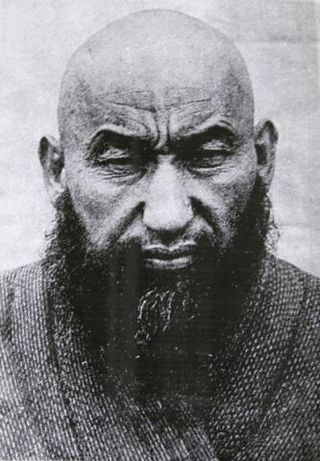
Ibrahim Bek or Ibrahim Beg was a leader in the Basmachi movement, a liberation movement in Central Asia, which fought against the Red Army. He was a member of the Uzbek Lakai tribe in Eastern Bukhara and led an organized resistance against the Soviet military in the early 1920s.

Soviet Central Asia was the part of Central Asia administered by the Russian SFSR and then the Soviet Union between 1918 and 1991, when the Central Asian republics declared independence. It is nearly synonymous with Russian Turkestan in the Russian Empire. Soviet Central Asia went through many territorial divisions before the current borders were created in the 1920s and 1930s.
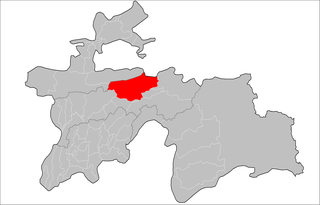
Rasht District is a district in Tajikistan, one of the Districts of Republican Subordination. It lies between the city of Vahdat in the west and Lakhsh District in the east; its southern neighbors are Nurobod, Sangvor, and Tojikobod districts; its northern border runs along the eastern finger of Sughd Region and along the international border with Kyrgyzstan. Its capital is the town Gharm. The population of Rasht District are known as Gharmis. The population of the district is 127,400.
Kulob Oblast was an administrative subdivision in Tajikistan during the Soviet period. It was created in 1939 but was abolished in 1955 along with Gharm Oblast and its territory was ceded to the Districts of Republican Subordination. In 1973 it was reconstituted and this time lasted until 1988 when it and its neighbor Qurghonteppa Oblast merged to form a new region, Khatlon Oblast. In 1990, Khalton Oblast was abolished and the 2 Oblasts were reconstituted. However, this only lasted 2 more years, because in 1992, it was once again merged with the Qurghonteppa Oblast to recreate Khatlon Region.
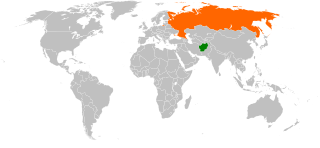
Relations between Afghanistan and Russia first emerged in the 19th century. At the time they were placed in the context of "The Great Game", Russian–British confrontations over Afghanistan from 1840 to 1907. The Soviet Union was the first country to establish diplomatic relations with Afghanistan following the Third Anglo-Afghan War in 1919. On 28 February 1921, Afghanistan and the Soviet Russia signed a Friendship Treaty. The Soviet Union intervened in Afghanistan against the Basmachi movement in 1929 and 1930.
Faizal Maksum was one of the leaders of an anti-Soviet group known as the Basmachi and led an organized resistance against the Soviet military occupation of Central Asia in the 1920s. Maksum was loyal to the ousted Emir of Bukhara and operated primarily on the border of the Soviet republic of Tajikistan and Afghanistan.
Kalanak is a village and jamoat in Tajikistan. It is located in Rasht District, one of the Districts of Republican Subordination. The jamoat has a total population of 10,411 (2015). The village is on the northern, right bank of the river Surkhob. On the left bank of the river are the western foothills of the Peter I Range.
Navobod is a town and jamoat in Tajikistan. It is located in Rasht District, one of the Districts of Republican Subordination. The population of the town is 5,500.
Khumdon is a village and jamoat in central Tajikistan. It is located in Nurobod District, one of the Districts of Republican Subordination.

The Tajik Autonomous Soviet Socialist Republic was an autonomous republic within the Uzbek SSR in the Soviet Union. It was created on 14 October 1924 by a series of legal acts that partitioned the three existing regional entities in Central Asia – Turkestan ASSR, Bukharan People's Soviet Republic, and Khorezm People's Soviet Republic – into five new entities based on ethnic principles: Uzbek SSR, Turkmen SSR, Tajik ASSR, Kara-Kirghiz Autonomous Oblast, and Karakalpak Autonomous Oblast.
Navdonak is a village in the jamoat Kalai Surkh in the Rasht District in central Tajikistan. Navdonak is east of Dushanbe in the Vakhsh valley and has a Köppen climate classification of Dsa and experiences wet and cold winters with dry cool summers. The village is close to the town of Gharm.
The Urtatagai conflict was a conflict between the Soviet Union and the Emirate of Afghanistan in the mid-1920s over the control of the island of Urtatagai, which is an island on the Amu Darya river that had been claimed by Afghanistan since 1900, although it was under Russian control until 1920, when remnants of the Imperial Russian Army evacuated the island to aid the White Movement in the Russian Civil War. The Afghan Army had earlier unsuccessfully tried to enforce its claim on Urtatagai in a border conflict in 1913, and in 1920 Afghan forces were finally able to capture the island unopposed. On 27 November 1925, due to repeated incursions into Soviet territory by Basmachi rebels using the island as a base, as well as the Soviet claim to the Island, 340 Soviet troops landed on the island of Urtatagai, and a clash with the island's garrison saw 12 people killed, and 5 Afghans were taken prisoner. On 18 December, the Prime Minister of Afghanistan issued a letter of protest, making four key demands: